Friends who visit my kitchen for the first time are usually surprised when they see my cookware. Most people assume a chef will own a full set of the best, most expensive stuff. But mine looks about as haphazardly assembled as the cookware stash in your local thrift store.
If you’ve read my blog very often–or been in my kitchen–you’ll know I have an affinity for mismatched kitchenware. As this extends to cookware, I own pieces of Lodge, All-Clad, Le Creuset, Chantal, Calphalon, Sur la Table and quite a few of indeterminate origin. As for materials, I have aluminum, stainless steel, carbon steel, tin-lined copper, cast iron–both plain and coated in enamel–and an assortment of metal fusions. Some pieces are cheap, some are moderately priced, and some represent a serious investment.
I love this jumble of cookware. Each piece has a different weight and a different feel in my hands. While I could make oatmeal in just about any vessel, there’s something satisfying about the little one-and-a-half quart stainless steel pot I bought for cheap from a restaurant supply company. If I’m making risotto, osso buco or pot stickers, I gravitate toward the All-Clad pan that’s big enough to take a nap in. There’s just something about it that says, “I’m here to feed all your friends in one go.”
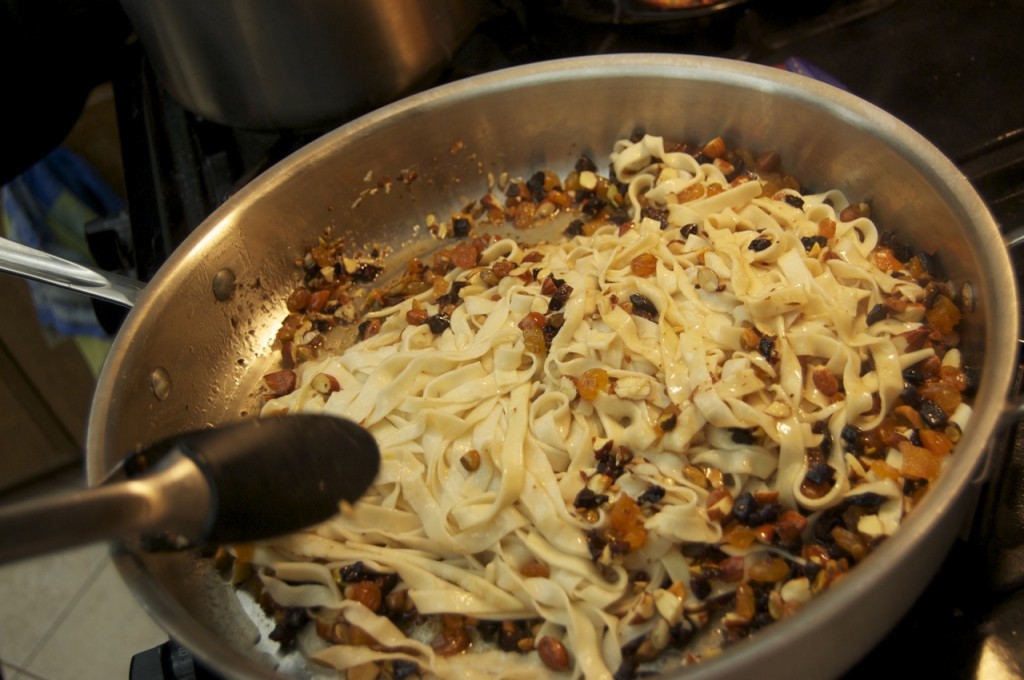
Tackling Dorie Greenspan’s Beggar’s Linguine in the giant All-Clad pan
Beyond personal esthetics, though, I think it’s valuable to learn the properties of different cooking surfaces and how a variety of foods responds to being cooked on those surfaces. Particular materials are best for specific chores. Aluminum is inexpensive and a good conductor of heat, and it does a great job for most things, but cook up a pot of tomato-based sauce in it, and the acid in the tomatoes will turn the pot dark gray or even black. This in turn will render light colored foods some unflattering shades–not good unless you happen to like gray cauliflower. Cornbread baked in anything but cast iron just won’t have the crusty exterior that makes eating it an aural as well as tactile and taste treat.
While I eventually replaced most of the aluminum pots and pans I accumulated during culinary school, I have hung onto the silverstone-coated skillets for cooking eggs and fish, both of which stick to uncoated surfaces. I’ll keep them until I get the seasoning built up on the old cast iron skillets I got from my mother and grandmother.
The iron skillet my mother used ever since I could remember had a coat of seasoning so absolute that cooking eggs in it was never a problem. Sadly, much later in life she began putting it in the dishwasher and destroyed that amazing finish. I’m working to rebuild it now.
My enamel coated cast iron dutch ovens take forever to heat up, but there’s nothing better in which to braise or stew. As for some of those fancy name brand pieces made of assortments of fused metals, I find it instructive to cook in them and have a good idea of what they can do. Some of them are pretty heavy, so I’ve confined myself to owning smaller pieces from those collections–if they’re too heavy for me to lift when they’re empty (I’m talkin’ ’bout you, Chantal!), I certainly can’t hoist them when they’re full!
Most of us wouldn’t drink hot coffee from a glass or peel an apple with a meat cleaver. So why don’t we give more thought to what we’re cooking our food in? Using the proper cooking surface for the task at hand means you can brown meat handily, cook fish without half of it remaining in the pan and stir up a Mornay sauce that is a warm, creamy color, not dull gray.
Not to put down anyone’s collection of All-Clad or Chantal–I certainly wouldn’t refuse it if someone offered it–but for me there’s something pleasant about cooking in a pot that doesn’t look like it’s part of a uniformed regiment.
Mismatched is just the way I like it!

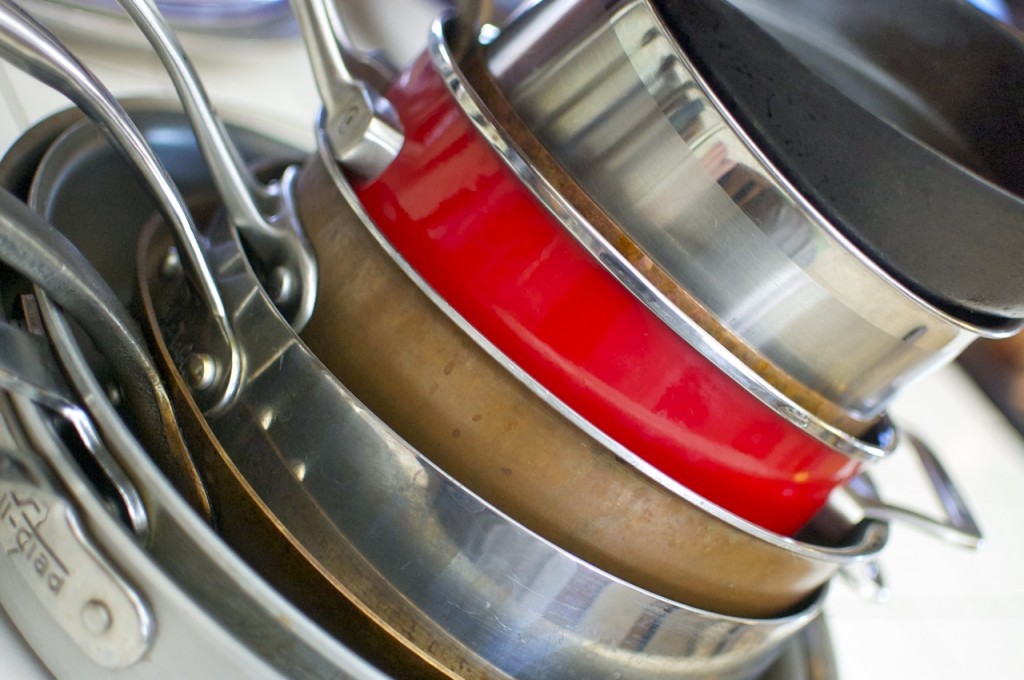
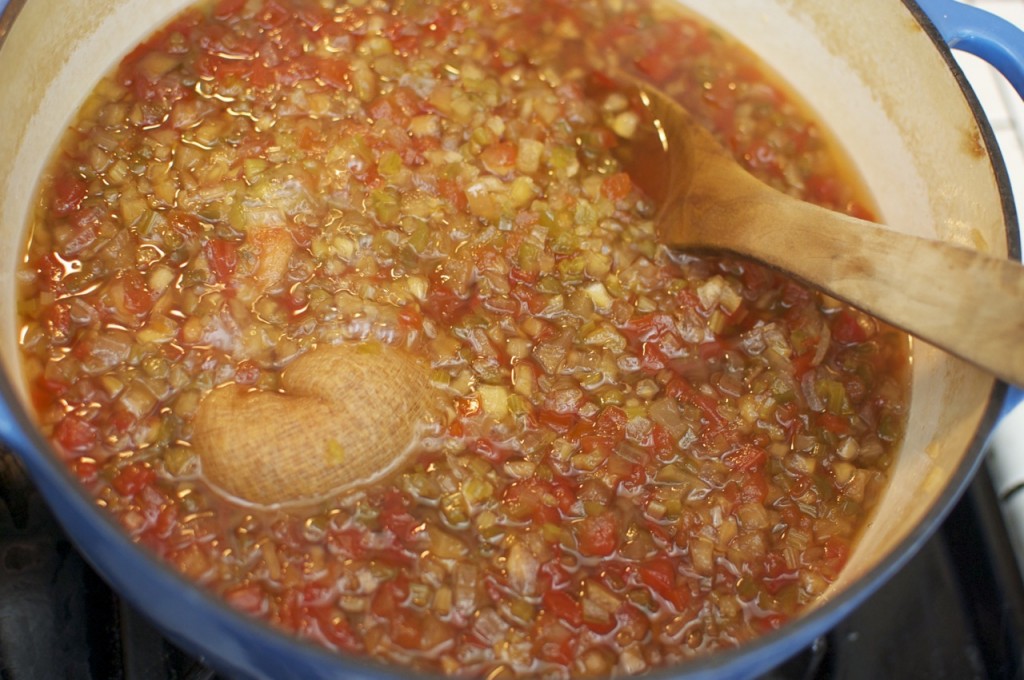
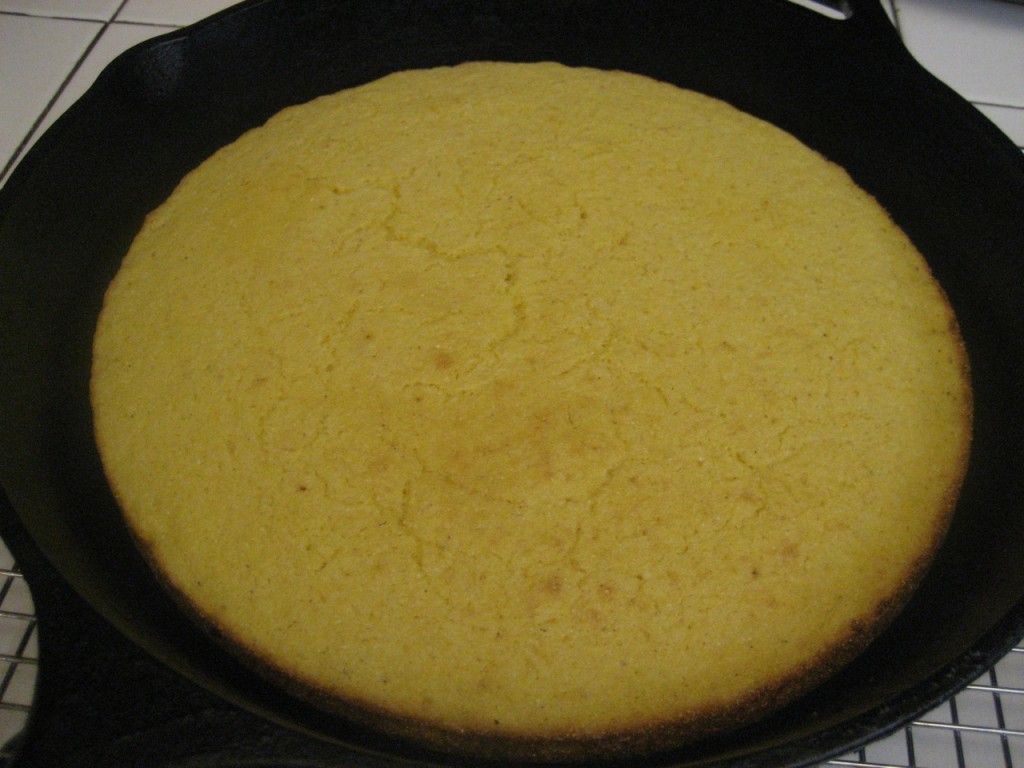
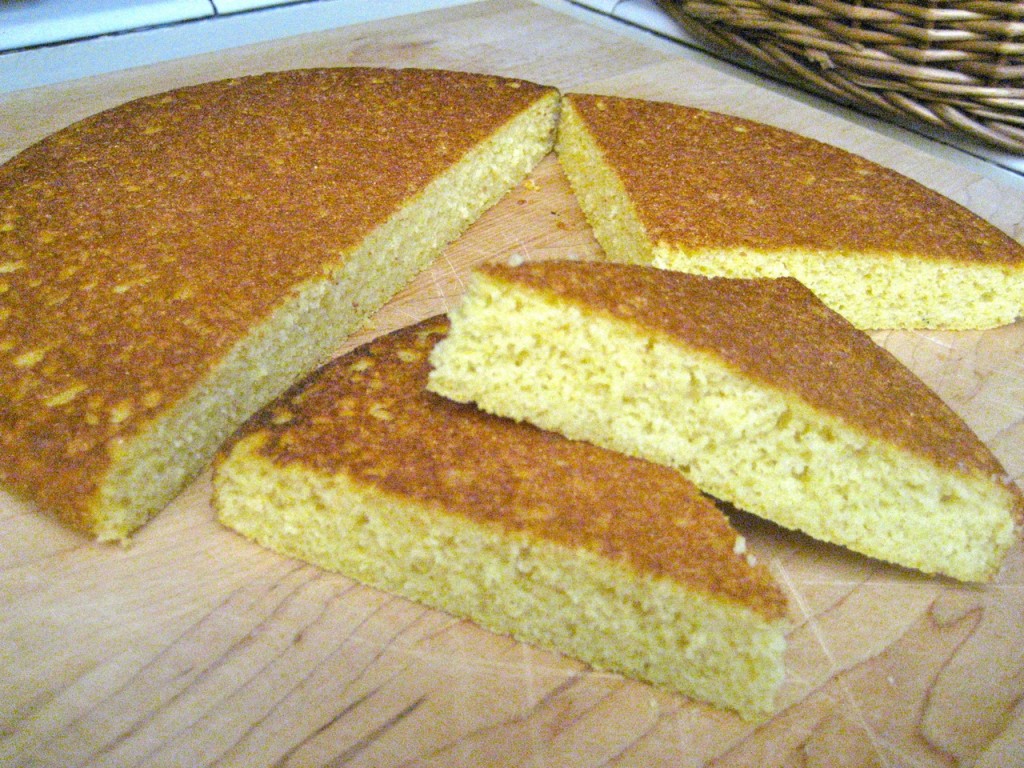
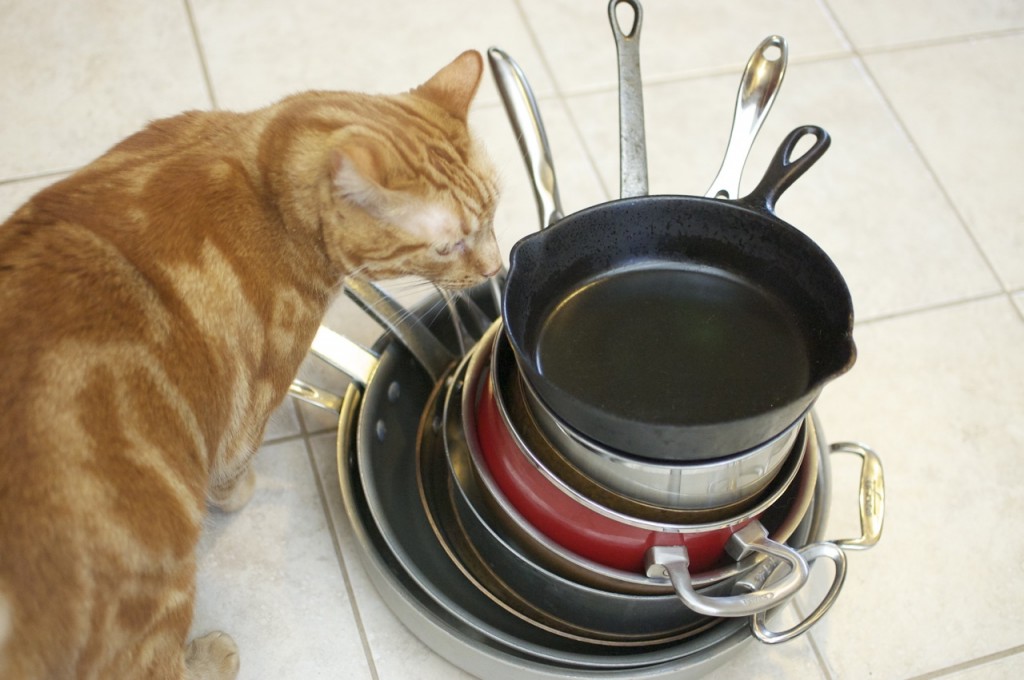















Cast iron in the dishwasher?! Nnnnnnnoooooooooo!!!!!!!!!!!
Yeah, once dementia started to set in, she began contradicting every piece of cooking advice she ever gave me. Strange and sad. Thankfully, she taught me how to do things early on. Those instructions are the ones I hold to.